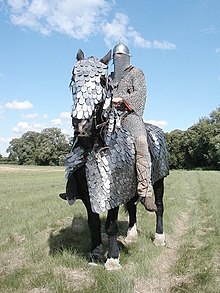
Savaran ( pahl. Savārān, sævɒɾɒn , literally "horsemen") - the term "savaran" is a simplified form of the term "asparayran" - in Pahlavi Əspəuərən. The literal translation from Pahlavi is “the one who is on horseback”, from the ancient Persian root Əsp - “horse”. This term denotes heavy cavalry ( cataphracts ) of Sassanian Iran .
For the first time they were formed under Shapur I , they were staffed from nobility, in fact, they were equestrian feudal irregular militias. As a result of the Mazdakit movement and the fight against it, significant strata of the nobility were destroyed in Iran, which affected the recruitment of Savaran. Under Khosrov I Anushirvana, as a result of the military reform, it acquired the appearance of a regular army, received a salary from the Shah's treasury. As a result of the reduction in the number of representatives of the nobility, Azat (small landowners) began to be admitted to the service in Savaran. The 12 regular cavalry regiments of the Savaran, formed by Khosrov I., were known. The 12 regiments of the Savaran were actually the only real force of Sassanian Iran under Khosrow I.’s heirs.
Literature
- Farrokh, Kaveh. Sassanian Elite Cavalry AD 224-642 . - Osprey Publishing, 2005. - 64 p. - ISBN 9781841767130 .
- Penrose, Jane. Savaran // Rome and its enemies. Carthaginians, Greeks and Barbarians. - M .: Eksmo, 2008. - 296 p. - (The military history of mankind). - ISBN 978-5-699-24680-9 .
- The Sassanid cavalry against Rome and Byzantium 224-642 // New Soldier: military history almanac. - Artyomovsk: Military history club "Veteran", 2002. - № 87 .